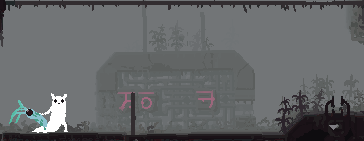Rat on a Stick
To many people, Skerples' Rat on a Stick is the original GLOG: the first thing to rise from Goblin Punch's weird primordial game-soup.Overview
- Roll-under System
- Standard Stats + Secondaries (Attack, Defense, Movement, Stealth)
- 4-template classes
- Roll under your attack + (10 - the target's defense) to hit
- 1d50 race table of mostly animal-lings, each with 1 advantage and 1 disadvantage
- Feudalistic Setting
Rat on a Stick's main problem is the combat system: instead of a faster d20 against AC, it has math, the bane of my existence. Rolling under a stat + (10 - another stat) for each attack is cumbersome and hard to explain.
The race table is one of the best parts of the system, and easily pulled out and used in a different hack.
I rate Rat on a Stick 3/5
Owlbear Stew
Owlbear Stew, created by Meandering Banter, is a good example of what I think of as a second-generation hack (because I'm pretentious): it obviously shares most of its words-DNA with Rat on a Stick, but adds new secondary rules and character creation options.Overview
- Roll-under System
- Standard Stats + Secondaries (Melee, Ranged, Defense)
- 4-template classes
- 2d8 race table of traditional races
- No actual combat rules - just unexplained stats (melee, ranged, defense)
- Gambits - have something worse happen on a miss to do something good on a hit
- Many extra and optional rules: diseases, mindsets (situational bonuses, such as Angry - reroll a failed initiative check if you immediately charge), trauma and mental breakdowns, karma (dying in a good way and doing good deeds gives you a bonus for your next character)
- Many more classes, some even having subclasses
Owlbear Stew is less like stew and more like a box of (sometimes exploding) chocolate: it's less a complete system, and more a load of mechanics to take things from.
If you plan to take mechanics, I'd recommend Mindsets: if you give them to your players at character creation, they're a really easy way to add some character differentiation (along with a small personality trait). Gambits are also very common in later GLOG hacks.
I rate Owlbear Stew 2/5
Moonhop
To be honest, I'm not sure if this is more of a GLOG hack or an ItO hack. Either way, it is a very interesting game, with mechanics far from more conventional GLOG hacks.Overview
- Roll-under System
- 3 stats - STR, DEX, CHA
- No classes - combination of a branching race table and branching background table
- Initiative is a DEX check: players roll one every turn
- Attacks always hit, Gambits based off STR checks
- GLOG magic system based around components
Moonhop is probably the easiest of these hacks to run at the table: between its short size and easy character creation, players can read it and prepare for the game in minutes. The backgrounds also show a strange setting, with options from medieval squires to starship engineers.
Unlike Owlbear Stew, Moonhop has few extra rules that could be taken - this helps the book be half the length, despite its large text.
I rate Moonhop 4/5
DIE TRYING
DIE TRYING is a 2nd edition of Owlbear Stew, with an expansive classless character creation system.Overview
- Roll-under System
- Standard Stats + Secondaries (Melee, Ranged, Defense)
- 2d8 race table of traditional races
- More organized than Owlbear Stew
- No classes: roll 3 times on a nested 2d20 table
- Less extra rules than Owlbear Stew
DIE TRYING has one of the longest, most complex character creation system in any OSR game I've ever seen. While many people will certainly have a problem with this, I find it excellent. Outside of that, it stays very similar to Owlbear Stew.
The improved organization when compared to Owlbear Stew is very noticeable. As well as the better organization, it's also 10 pages shorter than Owlbear Stew. This does remove many of the interesting extra rules found in Owlbear Stew, but they can easily be picked out of that game and placed in DIE TRYING. (I also like it's name the most.)
I rate DIE TRYING 4/5





